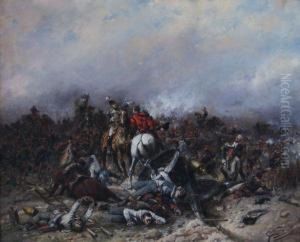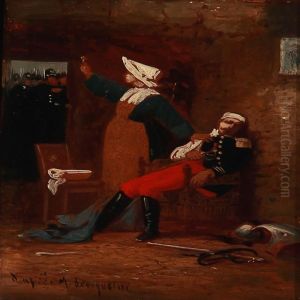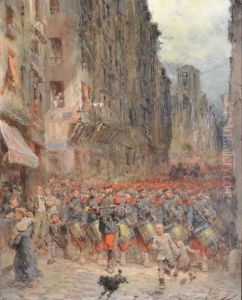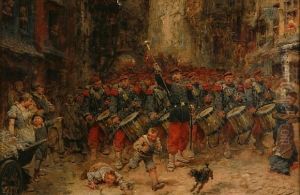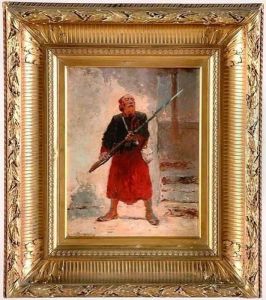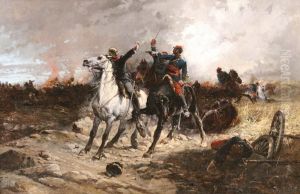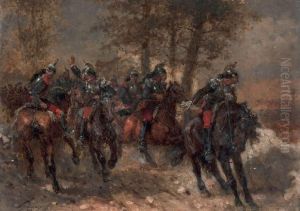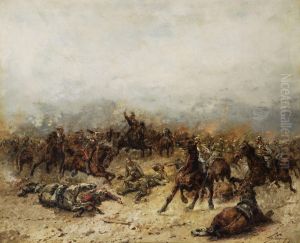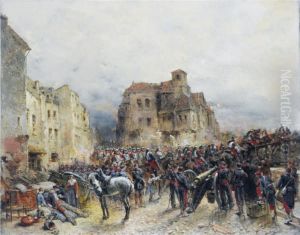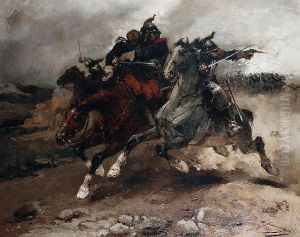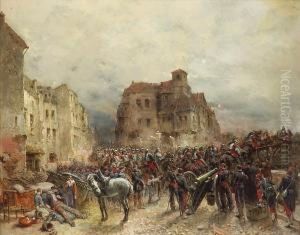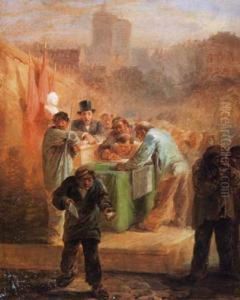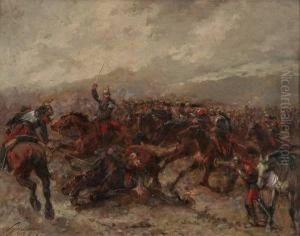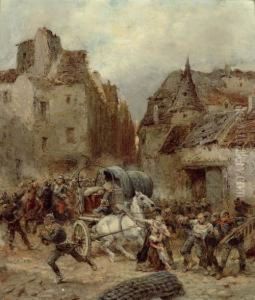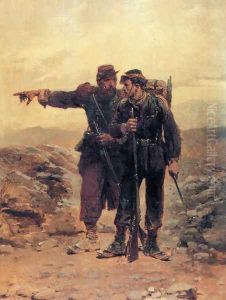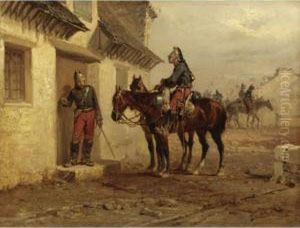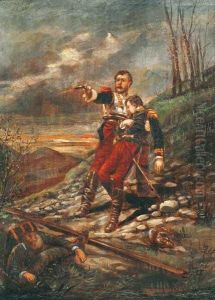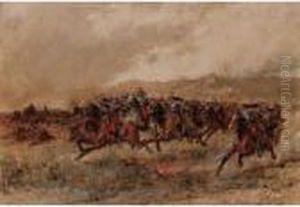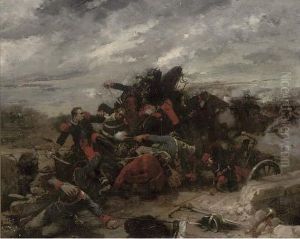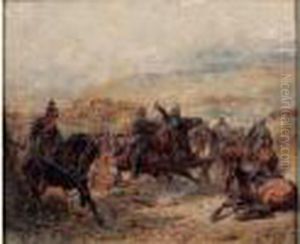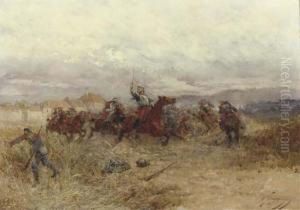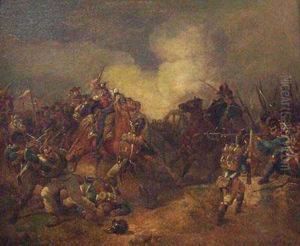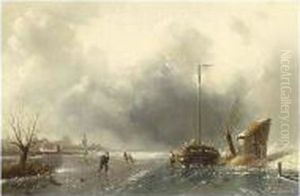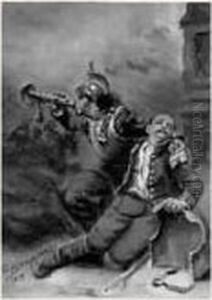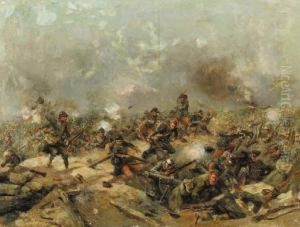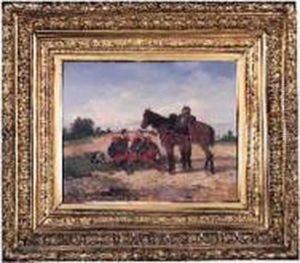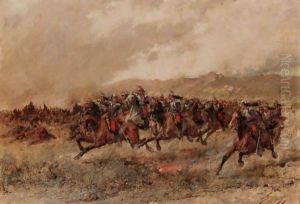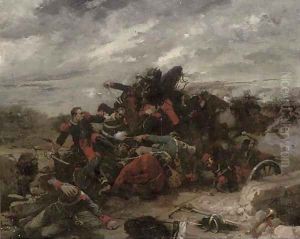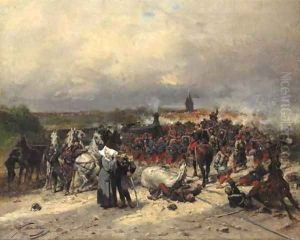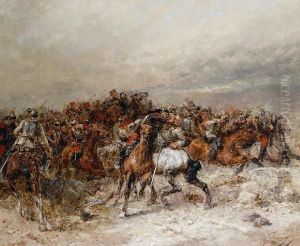Wilfred Constant Beauquesne Paintings
Wilfred Constant Beauquesne was a French painter known for his military scenes and battle depictions. Born on April 9, 1847, in Paris, France, Beauquesne was drawn to the military genre early in his career. Although not as widely known as some of his contemporaries, his work contributed to the popular genre of battle painting in the 19th century, which sought to capture the drama and intensity of warfare.
Beauquesne received his artistic training under the guidance of prominent French painters such as Isidore Pils and Horace Vernet, both of whom were renowned for their military and historical subjects. Influenced by their style and themes, Beauquesne developed a penchant for detail and a commitment to depicting military life and historical battles with accuracy and vigor.
Throughout his career, Beauquesne exhibited his paintings at the Paris Salon, an official art exhibition of the Académie des Beaux-Arts in Paris. His works were generally well-received, and he garnered respect among art critics and the public alike. One of his notable works is 'La Bataille de Champigny', which portrays a scene from the Franco-Prussian War. This painting, like many others by Beauquesne, is marked by its dynamic composition, realistic portrayal of the soldiers, and the atmospheric rendering of the battlefield.
Despite his focus on battle scenes, Beauquesne also painted other subjects, including genre scenes and landscapes. However, it was his military paintings that left a more lasting impression and defined his artistic legacy. Beauquesne's commitment to depicting military events helped document an important era in French history, capturing both the heroism and the tragedy of war.
Wilfred Constant Beauquesne's paintings can be found in various museums and private collections, offering insight into 19th-century military history and art. He passed away on October 4, 1913, in Paris, leaving behind a body of work that continues to be of interest to historians and art enthusiasts interested in the military art genre of that period.
